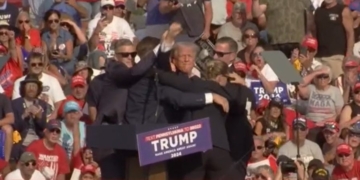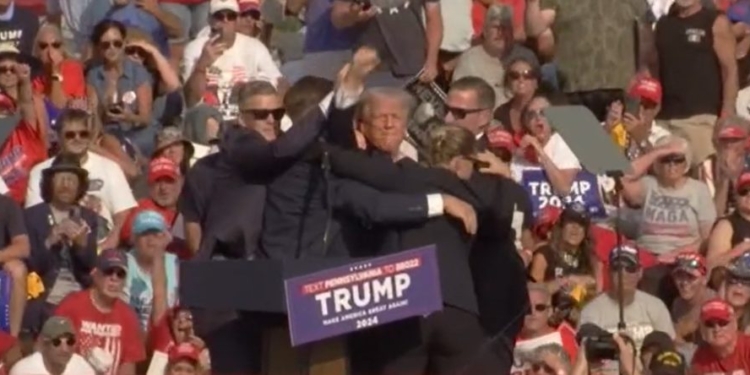A U.S. Secret Service report released Friday revealed several “communications deficiencies” that took place leading up to the July 13 assassination attempt on former President Donald Trump at a campaign rally in Butler County, Pennsylvania.
The five page report confirmed that faulty communications “inhibited the collective awareness” of both local and federal law enforcement tasked with securing the Butler rally, according to a summary of the report. Due to these security failures, 20-year-old Thomas Matthew Crooks was able to take aim at and fire shots at the former president from a rooftop positioned just 130 yards from the rally stage.
“The failure of personnel to broadcast via radio the description of the assailant, or vital information received from local law enforcement regarding a suspicious individual on the roof of the AGR complex, to all federal personnel at the Butler site inhibited the collective awareness of all Secret Service personnel,” the report summary reads.
Crooks was spotted by multiple witnesses and attendees leading up to the rally, flagged by Secret Service and even identified by a local counter sniper over an hour before Trump took the stage. As a result, attendee Corey Comperatore was killed and two bystanders were injured.
Although the Secret Service understood that the rally had many lines of sight that would make Trump vulnerable to a would-be assassin, there were no security measures taken to resolve those security concerns, according to the report summary.
The security personnel operating on the second floor of the building Crooks was positioned on reportedly had no communications with the Secret Service prior to the rally, according to the report summary. This tactical team was brought in by local law enforcement without coordinating with the Secret Service.
Despite these failures, the report does not identify the individuals responsible for the security lapses nor does it outline if any disciplinary action has taken place, according to the report summary.
However, reports confirmed that multiple agents were put on administrative leave over a month after the Butler assassination attempt. Then-Director Kimberly Cheatle also resigned from her post ten days after the shooting and following her evasive congressional testimony regarding the security failures that took place on July 13.
Within two months of the Butler assassination attempt, 58-year-old Ryan Wesley Routh attempted to assassinate the former president Sunday while he was golfing at the Trump International Golf Course in West Palm Beach, Florida. Routh was promptly arrested by law enforcement after his “AK-47 style rifle with a scope” was spotted in the bushes on the course by a Secret Service agent.
Following the second assassination attempt, acting Director Ronald Rowe admitted that the Secret Service needs to experience a “paradigm shift.”
“Coming out of Butler, I have ordered a paradigm shift,” Rowe said during a press conference on Monday. “The Secret Service’s protective methodologies work, and they are sound, and we saw that yesterday. But the way we are positioned right now in this dynamic threat environment, it has given me guidance to say, you know what, we need to look at what our protective methodology is. We need to get out of a reactive model and get to a readiness model.”
All content created by the Daily Caller News Foundation, an independent and nonpartisan newswire service, is available without charge to any legitimate news publisher that can provide a large audience. All republished articles must include our logo, our reporter’s byline and their DCNF affiliation. For any questions about our guidelines or partnering with us, please contact [email protected].



























 Continue with Google
Continue with Google